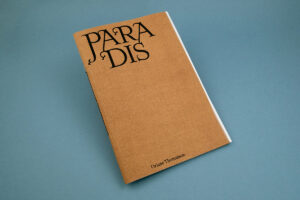YOUR CART
- No products in the cart.
Subtotal:
€ 0

SOLD OUT
Concept, photography and text:
Oriane Thomasson
Translation:
Louise Jablonowska
Design:
Rob van Hoesel
Lithography:
Sebastiaan Hanekroot (Colour&Books)
Production:
Jos Morree (Fine Books)
Print:
Wilco Art Books (NL)
Binding:
Patist (NL)
Supported by:
SABAM
Fédération Wallonie-Bruxelles
A cabinet of curiosities – or Wunderkammer – exhibits a wide variety of objects and artefacts with a particular notion towards the rare, eclectic and esoteric. Through their selection of objects, they tell a particular story about the way humans see the natural and cultural world.
Inspired by this way of collecting, Oriane Thomasson (FR) created Paradis, where science and art, natural and artificial, come together to produce a new fiction. The collection is a mosaic of photographic work and archival materials. From images she made during her travels through the Far East, to botanical and mineralogical illustrations.
Paradis examines the different materialities of images and the way they influence our imagination. The work questions the concept of nature through its representations, and the myths from Western societies that stem from those. As a modern explorer, Thomasson brings together what she discovered and assembles the images into a new narrative through which we wander.
Woven through the images is a fictional text in which the reader is led to an unknown land. Paradis is an invitation to rediscover nature’s ability to make us imagine, dream and build new stories.
English or French edition available.
Oriane Thomasson is a French artist based in Brussels. Through her photographic work, both analogue and digital, she explores the theme of paradise and nature, integrating archives and drawings with her own work. The materiality of the images and what they convey allow her to reflect on our visual imagination and the way these are constructed. Her work was exhibited at Contretype in Brussels, nominated for the Prix Caisse d’Épargne 2021 and part of the collective exhibition À bas Bruit.
“Inside, the photographs are printed on various types of paper and some pages are slightly shorter than others. The resulting visual flow is unpredictable and exciting, and the absence of captions encourages us to use our imagination to understand the pictures. An essay by Thomasson titled “The Monkey and the Sarcophagus”, which appears over several pages throughout the book, is full of surprises, as it immerses us into a new fictional world.” (Olga Yatskevich)
“People and their idiosyncrasies are disappearing, dinosaurs are elements of the decor of the giant amusement park that existence has become – frightening because it masks its vileness through the totalitarianism of its artifacts – and we can no longer distinguish the simulacrum from reality in its spontaneous inventiveness.” (Fabien Ribery)